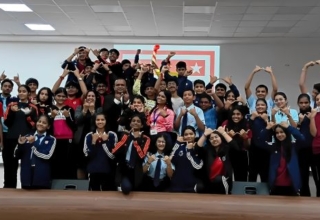
Vivek K Singh, Co-founder and CEO, Careerera
The GST exemption on Research and Development (R&D) grants recommended in the 54th GST Council meeting held in September will have a transformative impact and help boost research activities by HEIs in India. As per the decision of the Council, this measure will support research initiatives and boost the research outcomes.
This exemption relieves the institution of R&D Grants from GST i.e. Goods and Service Tax which unburden the shoulders of academic institutions and research organisations. Now rather than paying for the taxes these institutions can use the money for research and development and to increase the quality of education.
It may be mentioned that the decision was prompted by Prime Minister Narendra Modi’s concerns over recent tax notices sent to seven institutions on research grants. Seven educational institutions and universities across India had received GST show-cause notices from the Directorate General of GST Intelligence (DGGI) in August, demanding unpaid taxes amounting to ₹220 crore. Now, “past demands to be regularised on ‘as is where is’ basis”.
“The GST Council recommended to exempt supply of research and development services by a Government Entity; or a research association, university, college or other institution, notified under clauses (ii) or (iii) of sub-section (1) of section 35 of the Income Tax Act, 1961 using Government or private grants… Past demands to be regularised on ‘as is where is’ basis.”
GST relief can stimulate innovation by making it easier to attract and utilise grants. The institutions now can invest the same money in conducting high quality research and innovation. This will provide financial aid to the researchers with good equipment and support staff. The coming financial boost will lead to more productivity, new innovation and a global platform to showcase their ground-breaking discoveries. The reduction in financial constraint will lead to more collaboration between the universities and industries, traversing the unforeseen gap between the theoretical academic research and the mainstream practicals. Such collaborations could drive economic growth as well as address pressing societal challenges which would further position India as a hub of cutting-edge research. In essence, GST relief on R&D grants could invigorate the research landscape in Indian higher education, leading to substantial academic and economic advancements.
Research: The Cornerstone of Academic Excellence
Research comprises the foundation of a prominent higher education system. It is crucial to foster critical thinking, propelling scientific breakthroughs, and advancing societal progress. For developing nations, increasing both calibre and volume of research output is essential. This stands the need for significant bolster in high maintained research infrastructure, highly attentive faculties and students in advanced studies, and nurturing the ideology of inquiry and experimentation.
The pressing priority for institutions is to generate high impact research which looks after both global and local issues. Amplifying the collaborations with esteemed global institutions is much needed to elevate the visibility and impact of Indian research. Also rewarding the scholars through awards, scholarships, financial rewards can encourage innovation and will strengthen the global stature of academia, thus boosting the nation’s educational research landscape.
Innovation: Bridging Theory and Practice
Innovation caters as a condemnatory link between practical accomplishment and theoretical knowledge. By nurturing an environment to favour problem solving and entrepreneurial thinking, Indian higher education institutions can make significant contributions to economic development and technological improvement. The essential strategy is combining innovation into curriculum design, fostering interdisciplinary research and bolster the start-ups and technology incubators.
Additionally, building vigorous industry-academia collaborations can reinforce the aptness which will provide students with crucial real-life experience. These partnerships can smoothen the translation of research into industry-ready solutions and support the graduate credentials, enhancing the stature and watermark of Indian institutions on the global stage.
Global Rankings and Institutional Prestige
Global higher education rankings are often intended by the amalgam of innovation, research output and institutional reputation. In order to increase their global standings, Indian institutes need to excel in these domains. For an Indian institution to establish impactful global presence, participation in publications, conferences or any global academic event is necessary. Moreover, Quality over quantity should be prioritised to get impactful research and substantial innovation other than mere augmenting outputs. This framework will integrate with the criteria of global ranking agencies and will encourage the development of commending evaluation. By embracing this outlook, Indian higher education institutions can remarkably increase their influence and global structure.
Conclusion
India’s global higher education landscape is constantly evolving, characterised by the country’s significant growth in enrollment and the number of institutions. With over 1,000 universities and an emphasis on research and innovation, Indian universities are increasingly collaborating with international counterparts to become globally competitive. Initiatives like National Institutional Ranking Framework (NIRF) encourage quality and output in research, while an emphasis on skill development aligns education as per the job market requirements.
The COVID-19 pandemic has expedited the growth of online education, providing learners with greater accessibility and flexibility. India has taken a drastic transformation in excelling its higher education in global standing. Research and Development turns out to be the key in registering good rankings globally. Incentivizing R & D will enhance the overall academic culture and create a pull from bottom up.










